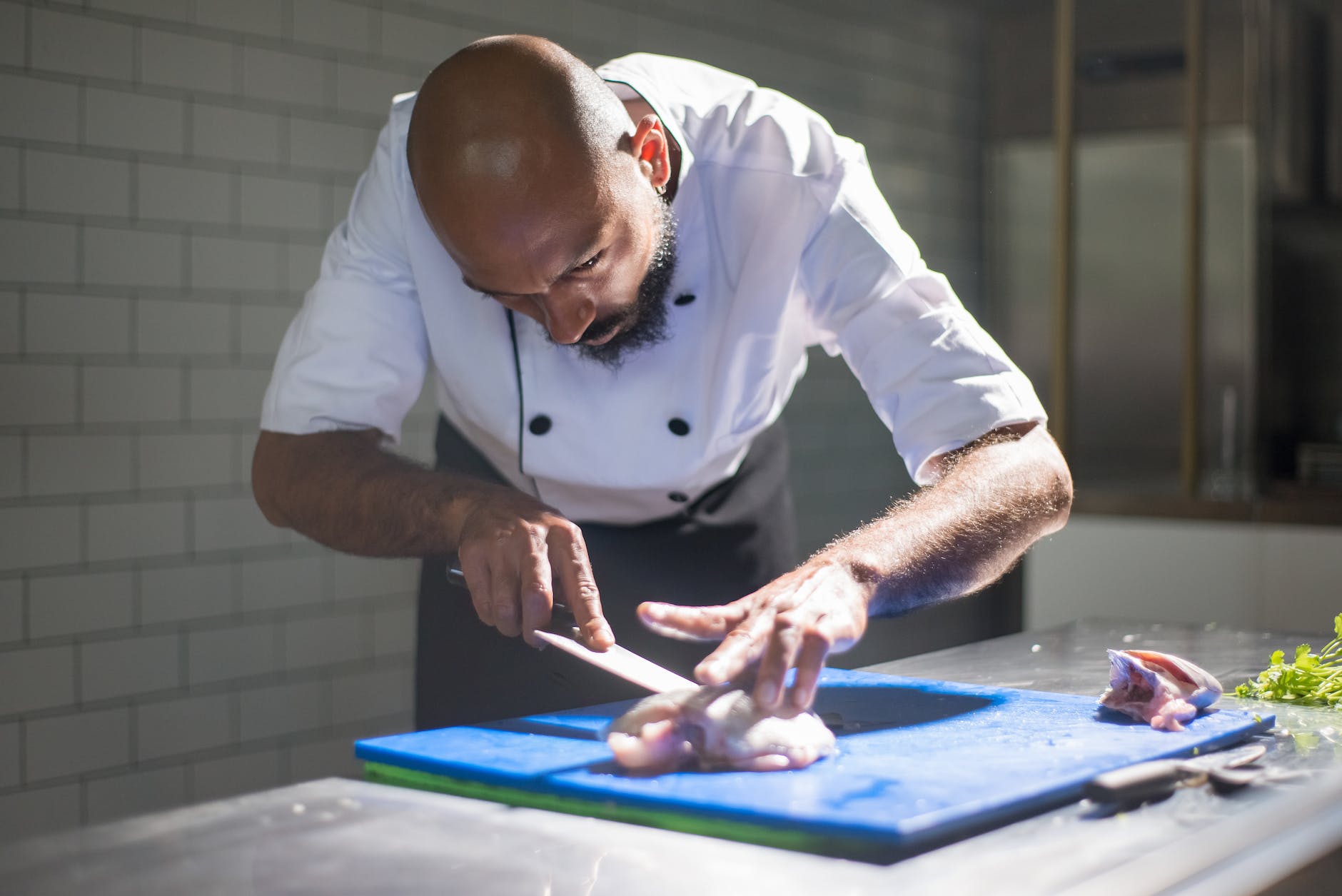In the culinary world, mastering knife skills is an essential foundation for any aspiring chef or home cook. The way you handle and use a knife can greatly impact your efficiency, precision, and overall enjoyment in the kitchen. In this comprehensive guide, we will delve into the world of knife skills, equipping you with the knowledge and techniques needed to become a confident and proficient wielder of this essential kitchen tool. From knife selection to proper grip and various cutting techniques, this guide will empower you to chop, slice, and dice like a pro.
I. Knife Selection:
- Chef’s Knife: The workhorse of the kitchen, a chef’s knife is versatile and suitable for various tasks.
- Paring Knife: Ideal for precision work and smaller tasks like peeling, trimming, and intricate cuts.
- Santoku Knife: Originating from Japan, a santoku knife is great for slicing, dicing, and mincing.
II. Knife Anatomy:
- Blade: Learn about the different parts of a knife blade, including the tip, edge, spine, and heel.
- Handle: Explore the various handle materials, shapes, and designs for comfort and grip.
III. Knife Maintenance:
- Honing: Discover the importance of honing your knife to keep the blade aligned and sharp.
- Sharpening: Learn how to sharpen your knife using a whetstone or other sharpening tools.
IV. Knife Grip and Stance:
- Pinch Grip: Master the proper technique of holding the knife using the pinch grip for stability and control.
- Stance: Understand the correct body stance and posture while handling a knife for safety and efficiency.
V. Basic Cutting Techniques:
- Rocking Motion: Explore the technique of using a chef’s knife with a rocking motion for efficient chopping and mincing.
- Slice: Master the art of slicing through ingredients with precision and consistency.
- Dice: Learn how to achieve uniform and even-sized dice cuts for professional-looking results.
- Julienne: Discover the technique of creating thin, matchstick-like strips for stir-fries and salads.
- Chiffonade: Unleash your inner herb connoisseur and learn to cut herbs into delicate ribbons.
- Mince: Hone your mincing skills to achieve finely chopped ingredients for sauces, salsas, and more.
VI. Safety Tips:
- Proper Cutting Surface: Use a stable cutting board to prevent accidents and protect your knife blade.
- Claw Grip: Master the technique of holding and guiding ingredients with your non-knife hand.
- Knife Storage: Safely store your knives in a designated knife block or sheath to prevent injury.
VII. Advanced Techniques:
- Filet: Dive into the art of filleting fish for restaurant-quality seafood dishes.
- Bone-In Cuts: Learn to navigate bones while portioning and preparing meat cuts.
- Vegetable Garnishes: Explore the world of decorative cuts like tourne, tournée, and oblique cuts.
Conclusion:
Mastering knife skills is a journey that requires practice, patience, and a genuine passion for the culinary arts. By understanding the fundamentals of knife selection, grip, and technique, you can elevate your cooking experience and create dishes with finesse and precision. Remember, a well-maintained knife and proper handling techniques are key to safe and efficient cutting. With this ultimate guide to knife skills as your companion, embrace the transformative power of a well-honed blade and embark on a culinary adventure like no other.
